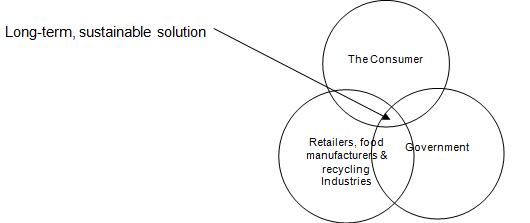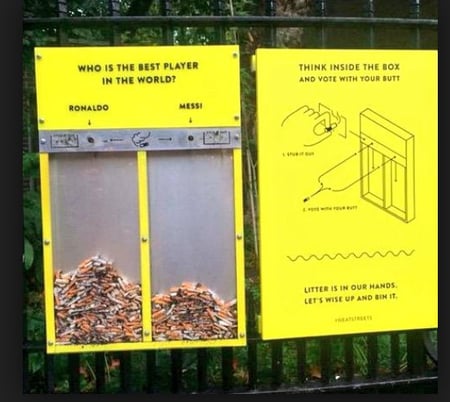Blog: The future of plastic food packaging – a summary view from Packaging Innovations

We asked Nick Parker, our Marketing Director, to share his thoughts on the future of plastic food packaging, based on the discussions that were taking place at Packaging Innovations...
I attended the best part of a day listening to several very experienced speakers from many of the stakeholder groups involved in packaging, including manufacturers, trade bodies, food & drink brand owners, local government and recyclers.
In summary – we are a long way from a solution.
On reflecting at the close of the seminar programme and in thinking how I best write this piece, I thought that you, the reader, would appreciate me starting at the end, by summarising a quick picture of the collective message coming out of the seminar programme.
At the danger of oversimplification, I had to conclude that, rather depressingly, the current situation facing the packaging industry is one where there is limited cross-over in the interests of the key stakeholder groups.
Believing that the long-term solution can only be at the intersection of these stakeholder interests, I can only conclude that we are a long way off finding the necessary widespread agreement on the ‘right’ packaging materials.

Views on the drivers of the future of packaging
Behind this summary view, there were some fascinating insights expressed in the seminars. I cover these briefly here and give some personal reflection on these as they relate to our business of dealing in rigid plastic & glass food packaging at Aegg.
Is there merit in agri-food plastics?
In truth I don’t really know much about what defines agri-food. Perhaps in this context it means the conversion of waste from food and agriculture into plastic. What I do know is that there is a lot of it around. Up to 40 percent of world food production is waste.
Besides abundant supply, there are several other merits of agri-food materials. Such as
- We can make plastics out of the gums, pectin and starches found in food and agricultural waste
- Other natural materials can be source materials, even crustacean shells and insect by-products.
- Some of the above materials can also be spun into fibre and then made into sheets that are naturally antimicrobial
There are significant downsides to agri-food materials, too. Perhaps most frightening are the dirty chemicals (such as pesticides) residing in the waste. We wouldn’t want to ingest these, particularly as their toxicity increases when they are nanosized through production processes. Some of these chemicals are known endocrine (hormone) disruptors.
Currently most products made from bioplastics need a percentage of fossil fuel derived plastics in order to bring strength to the finished product. The worry is that, on breakdown, this creates plastic micro beading in the environment.
A significant issue in dealing with a natural material is its variability. We can imagine the production challenges of making use of a raw material on a mass scale where composition is variable.
And how ‘environmentally sustainable’ is the production of the plant material anyway?
Plant based plastics are not part of the circular economy
There seemed to be a common thread coming from most of the seminar speakers who represented a business interest. Plant based plastics can’t be part of a circular economy either because
- They have very low calorific (energy) value. Therefore they have limited (if any) downstream reuse potential (and therefore limited economic value)
Or because
-
If they are biodegradable (can be broken down by natural organisms), the material disappears into the ether as carbon dioxide (itself contributing to the atmospheric carbon problem) and into the ground as water. This is therefore a linear process, with none of the ‘locked-in’ value necessary for sustaining the interests of each participant in a circular economy.
I did hear mention of using insects and fungi to convert biomass to bioproducts. Without knowing the details, I can’t think that there are many bioproducts that can be part of a circular economy. And there is the added problem of the aforementioned pesticide contaminants: killing off the organisms necessary for biodegrading stops the breakdown processes in their tracks.
One man’s friend is another man’s foe
When we think that perhaps one particular solution might be emerging as our saviour we hear of the experiences in other countries:
- In parts of Scandinavia beer is retailed in plastic bottles because it is considered greener than glass.
- In Germany, the carbonated drinks consumer is happy to buy product in re-used PET bottles. When trialled in USA, with industry investing millions of dollars, the consumer rejected the product. The notion of using scratched, second-hand packaging was too much to stomach.
Food and drink brand owners have a monumental task on their hands
From a business point of view I feel for the food and drink brand owners. They have their work cut out.
They have a big problem if consumers start rejecting their packaging. Green action groups, like Greenpeace jack up the pressure when they find a discarded branded carbonated drinks bottle (no names here!) lying on the ocean floor. The perception is that the brand owner is the evil party, not the consumer, or indeed any other involved party. So what is the brand owner to do when the packaging is both necessarily the first thing and the last thing in the consumer’s hand?
The brand owner companies are having to conduct holistic reviews that go beyond plastics and beyond primary packaging. Secondary packaging, production processes and logistics are all in the frame.
Historically many environmental analyses have focussed on carbon footprint. Now the attention has moved onto ‘single use plastic’ packaging. Where once it was acceptable to limit to a single dimension, now we are realising that the sustainable solutions can only come from undertaking a full life cycle analysis.
Although UK Government legislation is looking like becoming the most stringent in Europe, just the very notion of no legal consistency across countries must be a nightmare. And often the market place fails us. Policy makers must drive change because consumers talk one thing yet do another when they perceive that their lifestyle convenience is threatened. In uncharacteristic, but necessary speed of foot, The Single Use Plastics (SUP) Directive took just 6 months to conceive and publish. The industry feeling is that much of this directive is ill considered.
And some of the implications of pending legislation have mind-numbing associated costs. Estimates are that it will cost between 3 and 9 billion euros for the European drinks industry to create tethered drinks bottle caps by the 2024 deadline.
It is refreshing to hear that many companies are seeing this whole debate as an opportunity to brush up their brand ethics. Being open and honest in identifying the lack of certainty and the work still to be done makes businesses much more credible with the consumer.
The new mantra seems to be that the ultimate prize of brand ‘sustainability’ comes from pursuing ‘circularity’.
As consumers we don’t do what we say we want to do
Perhaps the only solution to waste is through limiting consumption. There are some cultures where consumers lead more responsible lifestyles than we do. Sweden may be one example. They already have a word for restrained living: ‘lagom’. A UK culture change is a big task.
Psychologists tell us that there is a large difference in what consumers say they want and the action they take. These experts refer to this as The Value Action Gap.
Our motivation only gets us so far. We have so many good intentions that we forget the specific one. And we all consider ourselves to be above average in our principles and behaviour, but of course half of us can’t be, by definition!
Apparently, there is also something in studies of human behaviour called Nudge Theory, where customers can be nudged into taking the right course of action. Positive nudges might be:
- As designers we could make a virtue out of reusing stuff: design a product to be aesthetically pleasing; make it something to enjoy and value.
- Use gamification strategies: e.g. express your vote by putting cigarette butts in one of two voting bins.
 Source: Hubbub
Source: Hubbub
Some local government authorities are doing some great things
Collaboration between all industry stakeholders is a new feature of the last couple of years, so we were told. Cambridgeshire has lead the way by creating a local circular economy, focussing on activites and outcomes that they can control within the local population. Rather sensibly, they have steered away from the hype by realising that ocean waste is less relevant to those people living in a land locked county. To achieve success the local authority acknowledged too that they had to commit to increase their public communications budget by £40,000 a year.
Whilst local authorities are being recognised as important players in the circular economy, there is an emergent frustration that DRS (deposit return schemes) and other brand owner private recycling schemes will undermine this by removing the highest value waste from local government schemes. This will negatively affect the viability of publically funded waste collection at a time when most people recognise that local authorities are the most economic collectors of waste.
It was a joy to me to hear that a home nation, Wales, is the second best recycling nation in the world, after Germany. The Welsh already collect 70% of all plastic waste centrally. Sadly DRS is forecast to negatively effect this.
Local authorities see compostables as a big problem as their recycling systems cannot distinguish it from fossil fuel derived plastic. And if one retailer in the area has a compostable bag and another retailer doesn't, it causes havoc in the local sorting facility.
What is the implication for the way Aegg sees the future for plastic packaging?
On the one hand we could see the above as our own industry version of Brexit, where we can’t make a move until someone else makes a move first. However, we note that some countries seem to know how to manage their way out of this pickle. Citizens in Poland, for example, do what their government tells them to do: there is one recycling scheme across the entire country. The UK is more devolved than this, but we feel that the Government has to force the UK consumer into more responsible behaviour. At Board management level we have taken an active decision to engage with, and support, the British Plastics Federation in their excellent work in co-ordinating an industry wide response to the Government’s four consultation exercises on pending changes to the national Resources and Waste Strategy.
[End]


